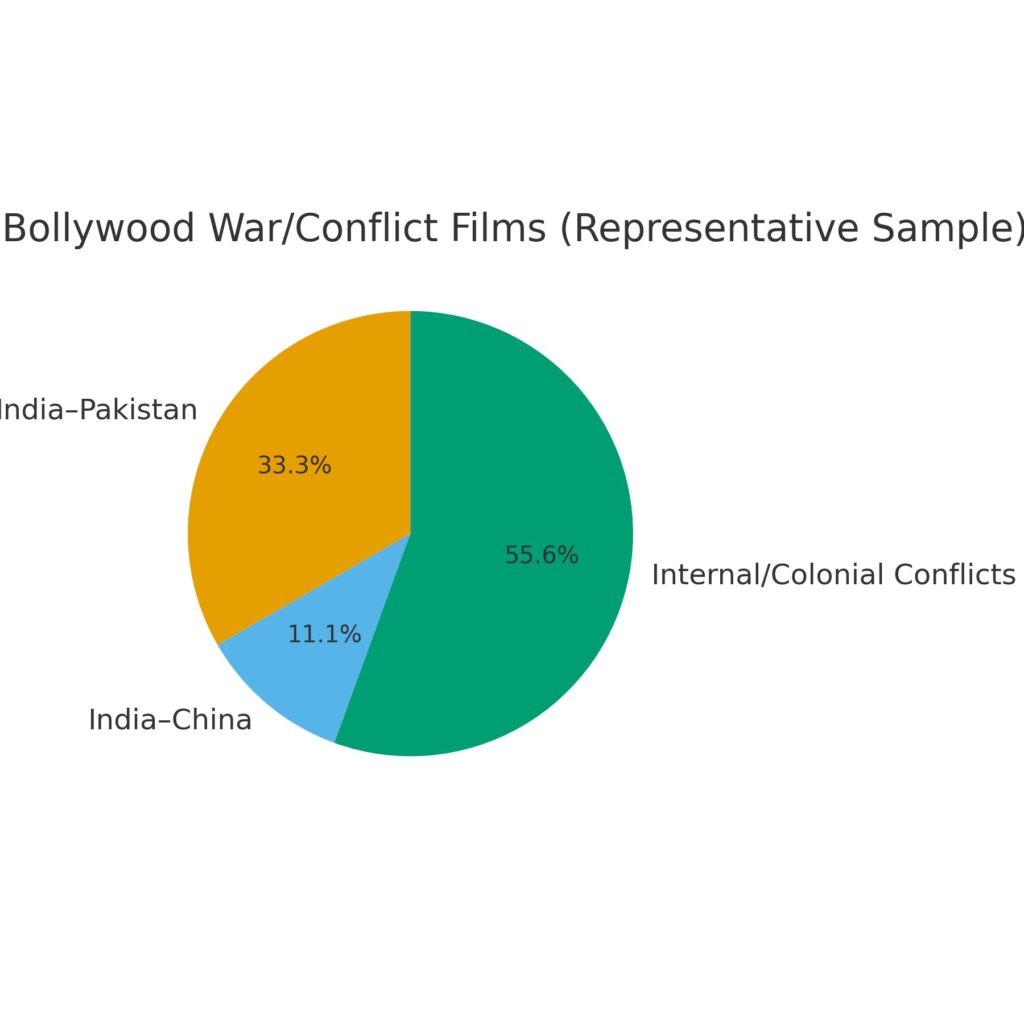BY NAMITA DOGRA SUDAN*
When Farhan Akhtar’s 120 Bahadur hits theatres this November, it won’t just retell the story of Rezang La, it will step into one of Bollywood’s least-explored territories: India’s war with China.
For decades, India’s film industry has found its patriotic voice most comfortably in stories about Pakistan or the British Empire. These two themes: partition, cross-border wars, or the freedom struggle have shaped Bollywood’s idea of courage, loss, and national pride. But China, despite being one of India’s most powerful neighbors and a recurring presence in real-world headlines, has barely found space in Hindi cinema.
The data paints the picture clearly. In a sample of notable Bollywood war and conflict films, over half are set against the India-Pakistan backdrop from Border and LOC: Kargil to Uri, Raazi, and Shershaah. Around one-third cover India’s internal or colonial conflicts, such as the fight against British rule or earlier empires like Lagaan, Mangal Pandey, Sardar Udham, or Tanhaji. In comparison, the India-China war has inspired only a handful: Haqeeqat (1964), Paltan(2018), the OTT series 1962: The War in the Hills, and now 120 Bahadur.
Chart Analysis: Where Bollywood Focuses Its War Stories

The imbalance shows how India’s emotional connection to Pakistan, shared language, divided families, multiple wars continues to dominate cinematic imagination. China, by contrast, remains a distant adversary: less familiar, less emotional, and diplomatically more sensitive. The 1962 war also ended in defeat, which makes it a harder story to dramatize within Bollywood’s usual tone of victory and pride.
Meanwhile, “Internal or Colonial Conflicts” form the largest portion of patriotic storytelling. These films let audiences celebrate heroism without current political baggage. Stories of British or Mughal oppression provide a safe distance from modern-day diplomacy and allow filmmakers to express nationalism without risk.
That’s what makes 120 Bahadur unusual, a film that dares to remember a war India lost, and the soldiers who refused to surrender. It comes at a time when India-China relations remain tense but cautiously improving, making its release both bold and timely.
If successful, it might encourage Hindi cinema to widen its lens to move beyond familiar enemies and victories, and finally tell the full story of India’s battles, both won and lost.



